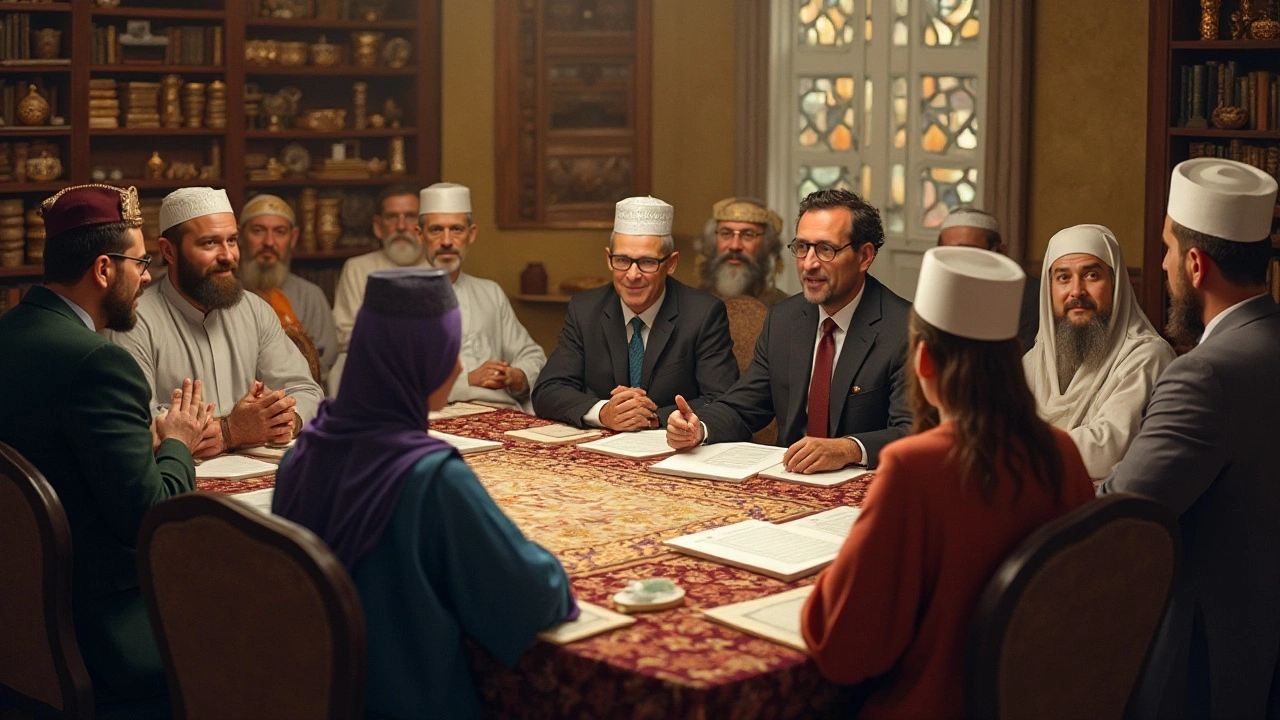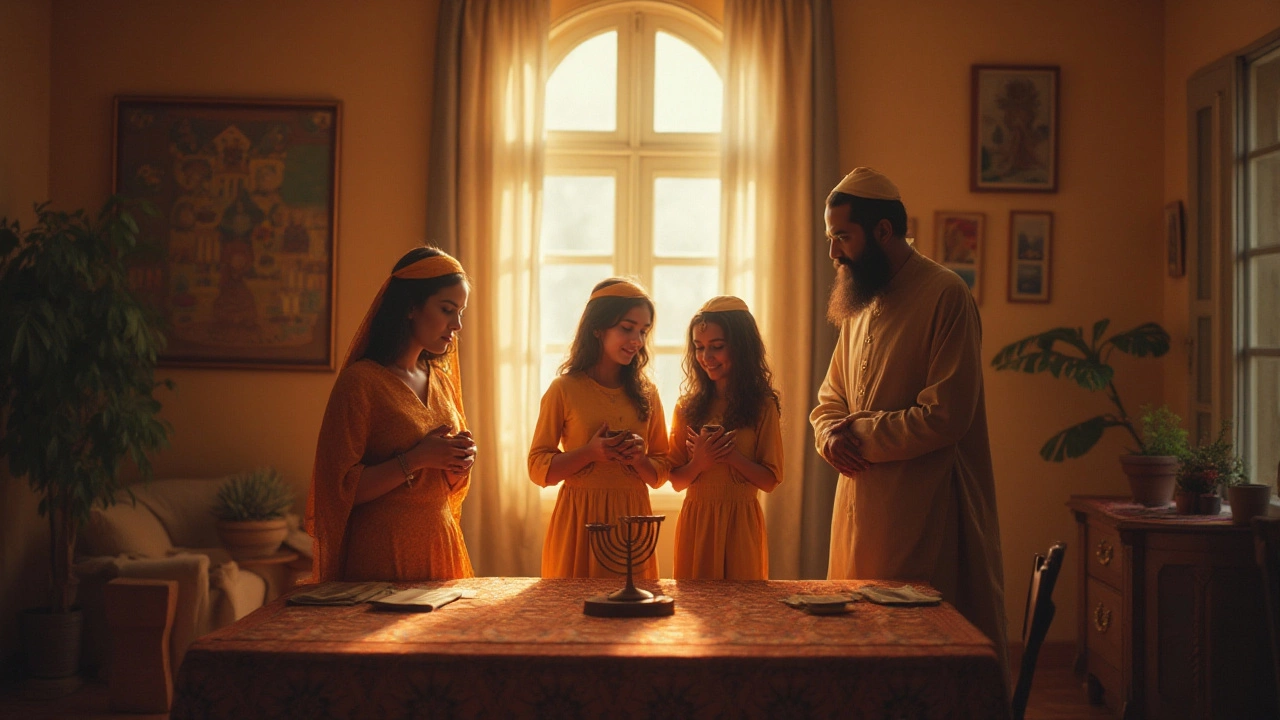Jewish prayer is a deeply spiritual practice that is rich with tradition and symbolism. It prompts curiosity about the various elements that may accompany these prayers, such as articles of clothing or specific items used during worship. Unlike some religious practices that include prayer rugs, traditional Jewish prayer does not involve the use of a rug. The ritual practices steer more towards prayer shawls, known as tallit, and phylacteries named tefillin.
Understanding these practices can enrich one's insight into the cultural and historical development of Judaism, and comparing them with other religions like Islam, where prayer rugs are customary, provides a fascinating perspective on religious expression. This journey through religious customs offers a lens into diverse spiritual lives, enriching the essence of respect and understanding.
- Traditions in Jewish Prayer
- Comparative Practices with Other Religions
- Historical Context of Prayer Practices
- Incorporating Traditions in Modern Spaces
Traditions in Jewish Prayer
Jewish prayer is a cornerstone of religious life, deeply woven with the fabric of daily existence. These practices are as much about community and tradition as they are about spirituality. The Jewish day is punctuated with prayer sessions, typically occurring three times, known as Shacharit (morning prayer), Mincha (afternoon prayer), and Ma'ariv (evening prayer). Each prayer session is a chance not only to communicate with God but also to connect with one's heritage and community. During Shacharit, the morning prayer, a tallit, which is a traditional prayer shawl, is often worn, symbolizing the dedication to God's commandments. Phylacteries, known as tefillin, are also worn during weekday morning prayers, containing scrolls of Torah passages, representing the mind, body, and soul dedication to God.
These elements are distinct from practices in other faiths where objects like prayer rugs play a central role. In Judaism, the focus is much more on these specific articles of faith rather than any type of rug or mat. It's a practice firmly embedded in historical traditions, commanding the believer's reflection and concentration. For instance, Daniel Levine, a well-regarded Jewish scholar, emphasizes, "The daily prayers are not just ritualistic but are moments woven with intent and deep connection to our ancestry and life."
The synagogue plays an essential role in Jewish prayer practices, acting as a communal space where adherents can gather, fostering a sense of togetherness and collective worship. Reciting the Amidah, a central prayer, facing Jerusalem, and chanting lines from the Torah reflect the deep-seated values and beliefs passed down through generations. Several elements, including the singing of psalms, accentuate the worship service with vibrancy and shared participation. This isn’t just about words spoken; it's about song and melody being embraced, filling the room with echoing traditions.
Notably, the prayer sessions, or services, might include the reading of the Torah during specific days, adding another layer of tradition and reverence to the practice. The construction of temples and synagogues historically followed architectural norms that facilitated such group assemblage and expression. These spaces are continuously evolving even today, adapting to the needs of evolving Jewish communities while respecting age-old customs. Incorporating tradition into modern spaces makes each worship unique but retains an essence of the rich history that it's anchored in.

Comparative Practices with Other Religions
When exploring religious practices across different faiths, the use of specific ritual items often reflects deep cultural and theological roots. In Judaism, prayer is central to spiritual life, but the tools associated with these prayers are markedly different from those in other religions like Islam. While some may assume that the use of a prayer rug, or 'sajjadah' in Islam, is a universal component of religious worship, in Jewish prayer, the emphasis is placed on items like the tallit and tefillin. The tallit is a fringed garment worn during morning prayers, and the tefillin are small black leather boxes containing Hebrew texts, traditionally worn on the head and arm. These are utilized not just for tradition, but serve as physical reminders of faith and connection to God.
In contrast, the use of a prayer rug in Islamic practices serves a unique purpose. It is designed to ensure a clean space for prayer, as Islam requires worship to be conducted on a pure surface. This tradition stems from the Islamic principles of cleanliness and orderliness. A Muslim prayer rug is often decorated with intricate patterns, creating a sacred rectangle that aligns with the worshipper's direction towards Mecca. The rug’s significance is embedded not just in its practical use, but also its symbolism representing the gate to the divine. This understanding stands in contrast to Jewish customs where the synagogue represents a sacred space for community and prayer, rather than an emphasis on a specific prayer item like a rug.
"Prayer in Judaism is as much an act of community and chant as it is of solitude," remarks Rabbi Ephraim Becker, illustrating the communal aspect of Jewish worship. "It symbolizes our covenant and dialogue with the divine."
Comparatively, the Christian tradition, particularly in Catholicism, focuses on liturgical garments and symbols like the rosary instead of rugs. Here, the emphasis is on the Eucharist as the central focus of worship, with churches built around an altar as opposed to a prayer direction. This is distinct from both Jewish and Islamic traditions, where directional prayer towards a holy site is pivotal. Each religion's use of items during prayer reflects their theological emphasis, adding layers to our understanding of these spiritual practices and how they shape the faith’s narrative.
The aesthetic and symbolic differences in religious practices can be observed through these ritual items, showing us how cultural nuances influence worship. From the fringes of a tallit to the patterns of a prayer rug, these elements speak volumes about each religion's history and values. Observing these helps bridge a deeper understanding between faiths, showing that while symbols and rituals may differ, the desire for a connection to something greater is universal. Recognizing these themes fosters tolerance and appreciation for the mosaic of religious diversity.

Historical Context of Prayer Practices
The history of Jewish prayer is as ancient as the religion itself, steeped in rituals that offer a direct line to spirituality and community life. The traditional Jewish prayer practices we see today have been shaped over centuries, dating back to the times of the Patriarchs, Abraham, Isaac, and Jacob, who established the three daily prayers that align with the offering of sacrifices in the Temple. These early practices laid the groundwork for what would become communal prayer, one of the cornerstones of Jewish worship.
As Jewish history progressed, especially after the destruction of the Second Temple in 70 CE, the mode of prayer significantly transformed. Without a central temple, Jews transitioned from sacrificial offerings to personal and communal prayer conducted in synagogues. The rabbis of the period codified these practices, leading to the creation of key texts such as the Siddur, the standardized prayer book still used today. This evolution marks a pivotal change from temple-based rituals to words of prayer that imbue daily life with spiritual meaning.
Unlike Islamic practice where a prayer rug is often employed, Jewish prayer customs focus on standing, sitting, and swaying, known as davening, along with the donning of specific garments like the tallit. The tallit is a shawl with tassels called tzitzit, which serve as a reminder of the commandments. According to Maimonides, a revered Jewish scholar, prayer without the tallit and tefillin, small black leather boxes containing scripture, lacks completeness.
The Jewish philosopher, Martin Buber, once articulated, 'When I pray, I speak to God. When I study, God speaks to me.' This quote encapsulates the deep interactive relationship in Jewish prayer practices.
For many, the significance of Jewish prayer is deeply tied to history, creating a living connection to their ancestors. Archaeological discoveries, like the remnants of ancient synagogues in Israel, provide physical evidence of these practices and offer valuable insights into how prayer was conducted centuries ago. Each discovery adds a layer to our understanding of the religious practices deeply rooted in Jewish tradition, influencing the spiritual lives of millions around the world. Historical context reveals the resilience of these practices and their ability to adapt, preserving the very essence of Judaism throughout the ages.

Incorporating Traditions in Modern Spaces
In the vibrant tapestry of our modern world, blending traditional practices with contemporary living spaces can open the door to rich cultural appreciation and connection. As people seek to honor age-old Jewish prayer practices in today's homes, the challenge becomes how to seamlessly integrate these elements without compromising the spirit of modern design. Jewish prayer practices do not typically utilize prayer rugs. Instead, items like the tallit and tefillin carry deep significance. Displaying these meaningful items or dedicating a special prayer corner can add both aesthetic and spiritual value to one’s home.
The move towards modern minimalism need not exclude tradition. A dedicated space for prayer could include a simple shelf or cabinet to store religious items respectfully. Incorporating these elements can be done tastefully, blending form with function. Light, neutral colors can enhance tranquility, turning a corner of a busy home into a serene retreat. It's all about creating a balance where sacred traditions meet the comfort of modern living. Enhancing such spaces might involve adding art or symbols that resonate with one’s spiritual journey, strengthening the emotional connection.
Design with Purpose
When designing a space to accommodate Jewish prayer, one might consider using personal symbols and items that carry individual significance. This not only pays homage to one’s heritage but allows individuality to shine through. Whether it’s a cherished family heirloom or an evocative piece of art, these elements can breathe life into the concept of modern worship. As highlighted in a thoughtful note by Ashley Goldberg, a notable interior designer focusing on faith-centered spaces:
"Creating a space of worship at home allows peace to flourish right where we live, inviting reflection and comfort daily."Incorporating testimonies of faith in design not only enriches personal spirituality but encourages a legacy of tradition passed down through generations.
Let’s not overlook the role of technology, which increasingly finds its place in modern worship. With digital tools transforming how people engage spiritually, one can easily incorporate multimedia into dedicated spaces. Portable speakers and digital frames can display inspirational content or traditional prayers, weaving technology into the sacred. These are strategic ways of embracing the modern while staying connected to age-old practices. In today’s wireless age, keeping a connection to faith can be as simple as a tap on the screen, all accessible within the consecrated corners of a household.
